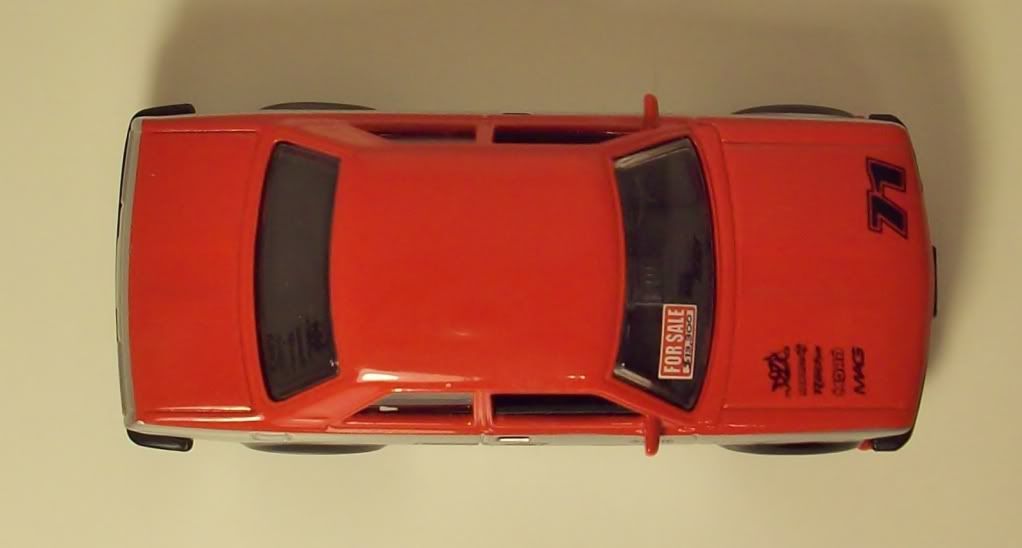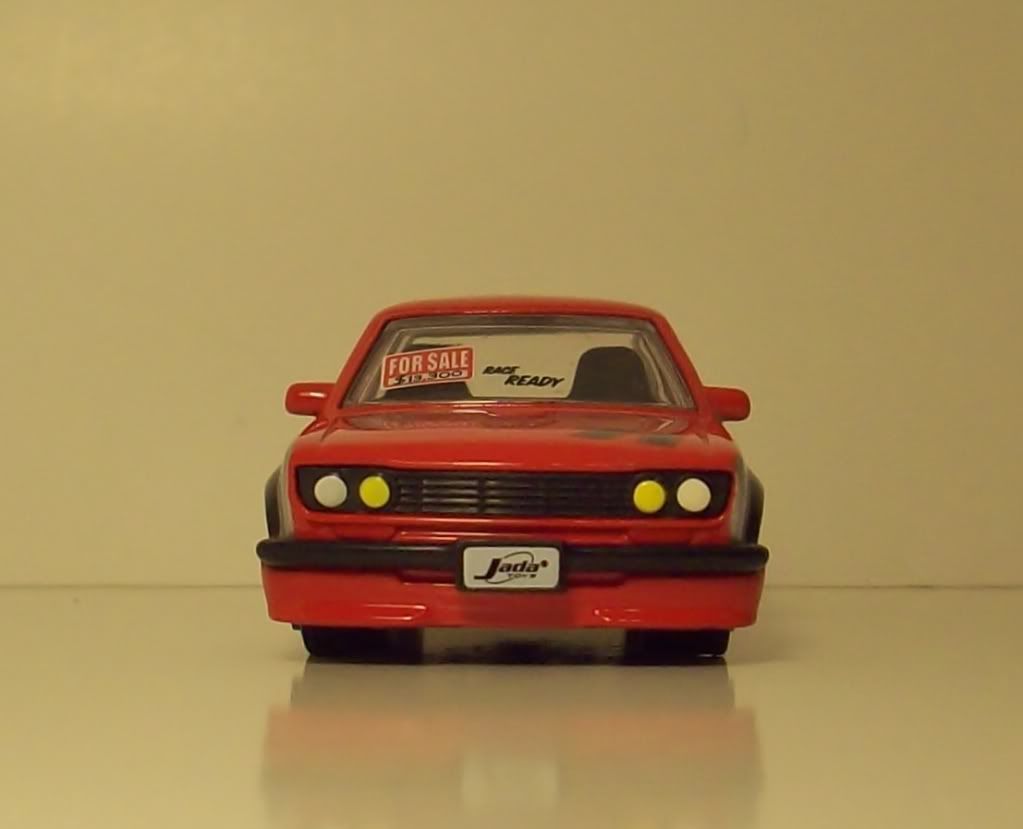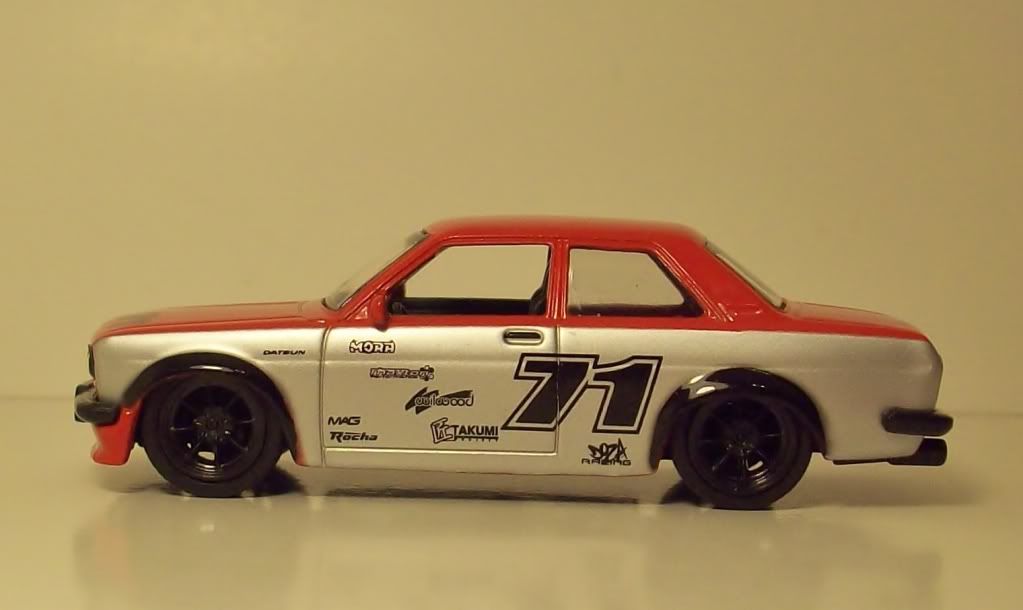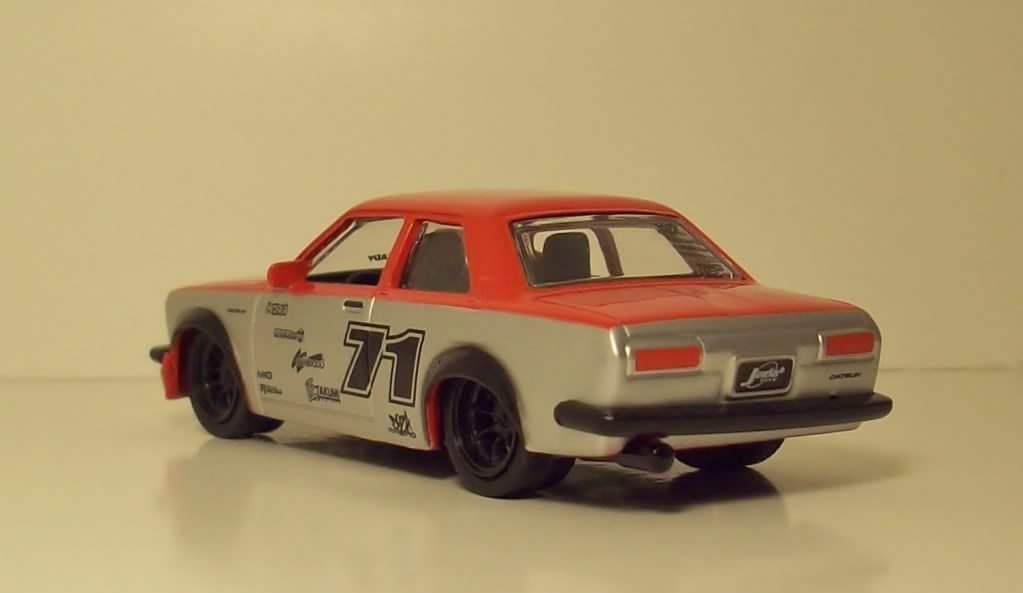
A blog focusing on 1/64 diecast from such popular brands as Hot Wheels, Matchbox, Johnny Lightning, M2 Machines, GreenLight, Tomica, Yat Ming, Majorette, MotorMax, Siku, Corgi, Guisval, Playart, Ertl, Zylmex, Racing Champions, & many more. Swifty's Garage features a daily Car Of The Day and news updates from your favorite brands!
Wednesday, August 24, 2011
Car Of The Day: August 24, 2011
Today's car of the day comes from Firehawk73's collection and is Jada's 1971 Datsun 510.
The Datsun 510 or P510/PL510 was a series of the Datsun Bluebird sold from 1968 to 1974, and offered outside the U.S. as the Datsun 1600. According to AutoWeek's G.D. Levy, the 510 has often been called the "poor man's BMW." The 510's engineering was inspired by contemporary European sedans, particularly the 1966 BMW 1600-2, incorporating a SOHC engine, MacPherson strut suspension in front and independent, semi-trailing arms in the back. The European-influenced sheet metal design is attributed to Datsun in-house designer, Teruo Uchino.
The engine was pushed through by Nissan USA president Yutaka Katayama, a design developed through Prince, an acquisition, with some Mercedes Benz influence.
Its positive reputation led to the 510 tag being reused there for the unrelated and mediocre 1978-1981 Nissan Stanza 'H510' in an effort to capture this range’s glory, an effort reviewers thought a failure.
Launched in August 1968, it was one of the most comprehensive Bluebird ranges in terms of body styles: a two-door sedan, a four-door sedan, a five-door station wagon, and a two-door coupé (added in November 1968).
This range became famous for Nissan's rallying successes outside Japan and paved the way for greater Nissan sales internationally.
The Datsun 510 released to the U.S. market came originally with the Hitachi downdraft carbureted 1.6L L-series I4 engine, with an advertised gross power of 96 hp (72 kW), a claimed top speed of 100 mph, front disc brakes, 4-wheel independent suspension (MacPherson strut front and semi trailing arm rear- wagons had a solid rear live axle and leaf springs in back), rear wheel drive, and either a 4-speed manual or a 3-speed automatic transmission. 2-door sedan, 4-door sedan, and 4-door station wagon variants were available. It achieved 20-30 mpg in factory trim (U.S.). JDM spec models were also available in a 2-door coupe body style in either a 1.6L or a 1.8L (1973) L-Series engine. 510's in some markets offered available twin Hitachi side-draft carburetors, which were a smaller version of the British SU (Skinner's Union ) design used on Jaguars and MGs. These engines also used enhanced compression and camshaft profiles to produce more power. SSS models (not available for the U.S. 510) offered upgraded instrumentation and interior trim, as well as appropriate exterior badges. All U.S. model 510s received anti-sun glass from 1970-on.
For more information and pictures of the real car please visit: Datsun 510
This is a nice piece of diecast, and I regret that I lack an example of this casting in my personal collection.
Affordable performance combined with simple and reliable mechanicals has helped the Datsun 510 remain a popular automotive enthusiast's car for nearly 40 years. Avid collectors can be found around the world with significant numbers in the US, Australia, & New Zealand.
One advantage of the early Nissan/Datsun cars is that many of the parts are interchangeable — engines, transmissions, suspension setups, etc., were all similar enough to swap with minor modifications. This allowed the Datsun 510 to be easily upgraded from the 1.6l - L16 engine, to the 1.8l - L18 engine, and later to the 2.0L L20B engine, and to go from the 4-speed manual transmission to the 63mm (shaft-center distance) 5-speed transmissions made available for the early (S10) 200SX and (A10) HL510, and the 71mm 5-speed transmissions used in the (S30 & S130) 280-series Z cars, '80-'83 (S110) 200SX, the '77-'80 (810) 810, the '81-'84 (910) 810/Maxima/Bluebird, and the C210/R30 series of Skylines. The 71mm 5-speed transmissions also saw extensive use in the 620/720/D21 series pick-up trucks in both long and short (rare) extension-housing versions.
Subscribe to:
Post Comments (Atom)






No comments:
Post a Comment